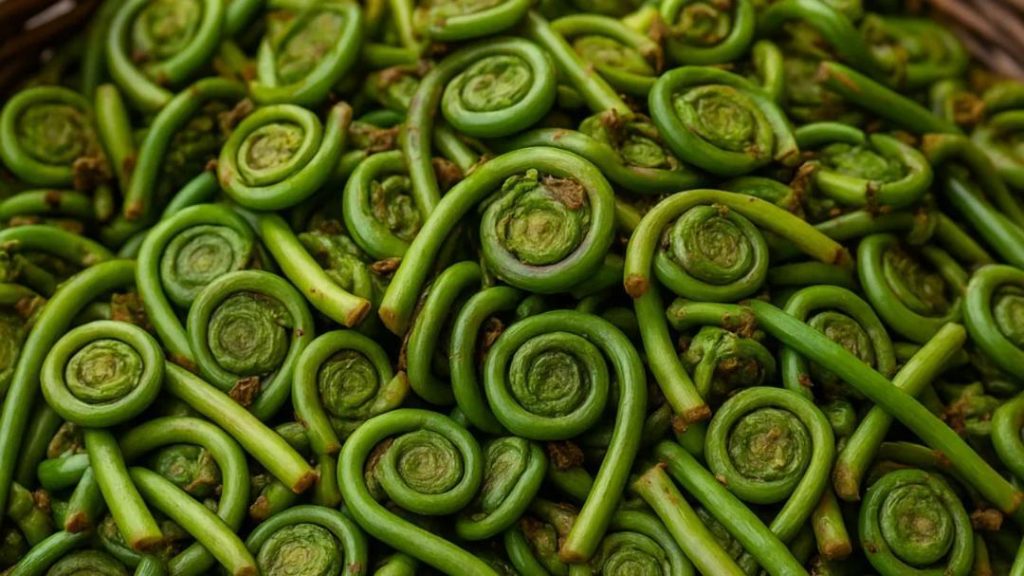
Lingad, a Monsoon Fern, Boosts Immunity and Bone Health
The Indian subcontinent is home to a diverse range of flora, with each region boasting its own unique set of plants and herbs with impressive health benefits. One such lesser-known gem is the Lingad, also known as the fiddlehead fern (Diplazium esculentum), which is a type of young, coiled shoot that grows in the Himalayas during the monsoon season. This wild delicacy has been an integral part of traditional Indian cuisine for centuries, and its nutritional profile is nothing short of impressive.
Harvesting the Lingad
The Lingad is typically harvested in the early stages of its growth, when it is still curled and tender. This is crucial, as the fern becomes fibrous and unpalatable once it matures. The harvesting process is usually done by hand, with local foragers venturing out into the Himalayan forests to collect the prized shoots. The Lingad is often referred to as Lengdu, Dhekia, or Nigro in local dialects, and its unique flavor and texture have made it a staple in many regional cuisines.
Nutritional Profile
The Lingad is a powerhouse of nutrients, boasting an impressive array of vitamins, minerals, and antioxidants. It is an excellent source of vitamin A, vitamin K, and calcium, making it a valuable addition to a balanced diet. The fern also contains a range of beneficial compounds, including flavonoids, phenolic acids, and saponins, which have been shown to possess anti-inflammatory and antimicrobial properties.
Immune System Boost
The Lingad’s impressive nutritional profile makes it an excellent natural remedy for boosting the immune system. The fern’s high concentration of vitamin C, for example, helps to stimulate the production of white blood cells, which are essential for fighting off infections. Additionally, the Lingad’s antioxidants and flavonoids work together to protect the body from oxidative stress, reducing the risk of chronic diseases such as cancer and cardiovascular disease.
Bone Health
The Lingad is also an excellent natural remedy for supporting bone health. The fern is an excellent source of calcium, which is essential for maintaining strong bones and teeth. Additionally, the Lingad contains a range of other minerals, including magnesium, potassium, and manganese, which are all important for bone health.
Traditional Uses
The Lingad has been used in traditional Indian medicine for centuries, with practitioners using the fern to treat a range of ailments, from digestive issues to respiratory problems. The fern is also used in Ayurvedic medicine to treat conditions such as arthritis, gout, and joint pain.
Culinary Uses
The Lingad is a versatile ingredient that can be used in a range of dishes, from soups to stir-fries. The fern has a unique flavor that is often described as earthy and slightly sweet, making it a popular addition to many regional cuisines. In some parts of India, the Lingad is used to make a traditional dish called “Dhekia bhaji,” which is a spicy stir-fry made with the fern, onions, garlic, and chilies.
Conclusion
The Lingad, or fiddlehead fern, is a unique and nutritious ingredient that has been an integral part of traditional Indian cuisine for centuries. With its impressive nutritional profile, immune-boosting properties, and bone-health benefits, it’s no wonder that the Lingad is a prized ingredient in many regional cuisines. Whether you’re looking to boost your immune system, support your bone health, or simply add some unique flavor to your meals, the Lingad is definitely worth trying.
Source:






